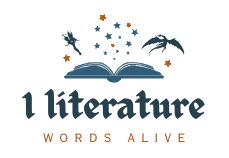Adapting "The Signature of All Things" for film offers an exciting opportunity to explore Alma Whitaker's journey as a pioneering botanist in the 19th century. PBS Masterpiece leads this adaptation, emphasizing rich narratives and complex themes surrounding women's intellectual ambitions. With experienced screenwriter Emily Ballou at the helm, the project aims to capture the essence of the original novel while engaging modern audiences. This adaptation is part of a broader trend where literary adaptations thrive in Hollywood, boosting interest in the source material. Keep following to discover more about the adaptation's cultural impact and its creative approach.
Adaptation Announcement
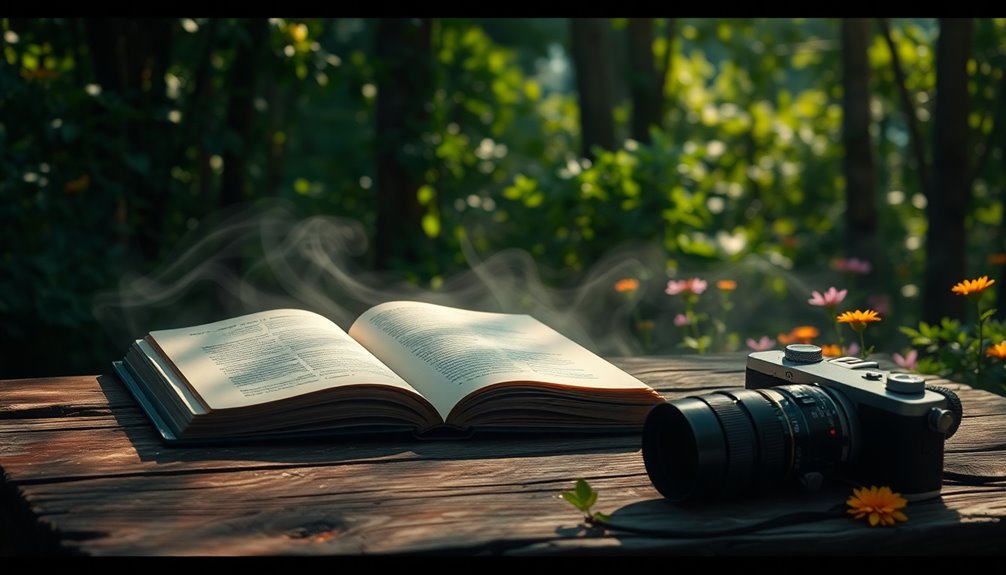
PBS Masterpiece made waves on April 21, 2015, when it announced the adaptation of Elizabeth Gilbert's bestselling novel, "The Signature of All Things."
This enchanting story follows Alma Whitaker, a 19th-century botanist, and explores the complexities of women's roles and intellectual ambitions of the time. The narrative's focus on self-discovery parallels the themes found in classic literature, such as those in "The Secret Garden." Moreover, the adaptation seeks to highlight the impact of social class on Alma's journey, reflecting the rigid structures that shaped women's opportunities during the Victorian era.
The adaptation aims to stay true to the original source while translating its rich narrative into a mesmerizing television format. WGBH Boston, renowned for producing high-quality period dramas, leads the project.
They've tapped Emily Ballou as the screenwriter, whose previous experience in television promises a thoughtful and engaging portrayal of Alma's journey.
Fans of the novel enthusiastically anticipate how this adaptation will bring Gilbert's vibrant characters and themes to life on screen. The story encapsulates the struggle against gender stereotypes, showcasing Alma's determination to carve her own path in a male-dominated field.
Central Themes of the Novel
The adaptation of "The Signature of All Things" brings to the forefront the novel's central themes, particularly the struggle for women's intellectual ambitions in the 19th century.
Alma Whitaker, as a complex character, navigates societal constraints while pursuing her passion for botany. The story juxtaposes her scientific journey against the limited roles available to women, reflecting a broader quest for autonomy and recognition. This mirrors the themes of resilience and personal growth found in Charles Dickens' works, where characters face societal challenges. The narrative emphasizes the impact of forbidden love on personal choices, akin to the emotional struggles depicted in McCullough's *The Thorn Birds*.
Alma's experiences highlight emotional and physical transformations, showcasing the challenges women faced. Additionally, the relationship between science and nature serves as a powerful metaphor for her pursuit of knowledge in a male-dominated world. The historical context of women's struggle for recognition in science parallels the ethical dilemmas explored in works like "The Immortal Life of Henrietta Lacks."
Gilbert's rich storytelling techniques weave love, loss, and self-discovery, making Alma's journey resonate deeply within the historical context.
Elizabeth Gilbert's Writing Journey
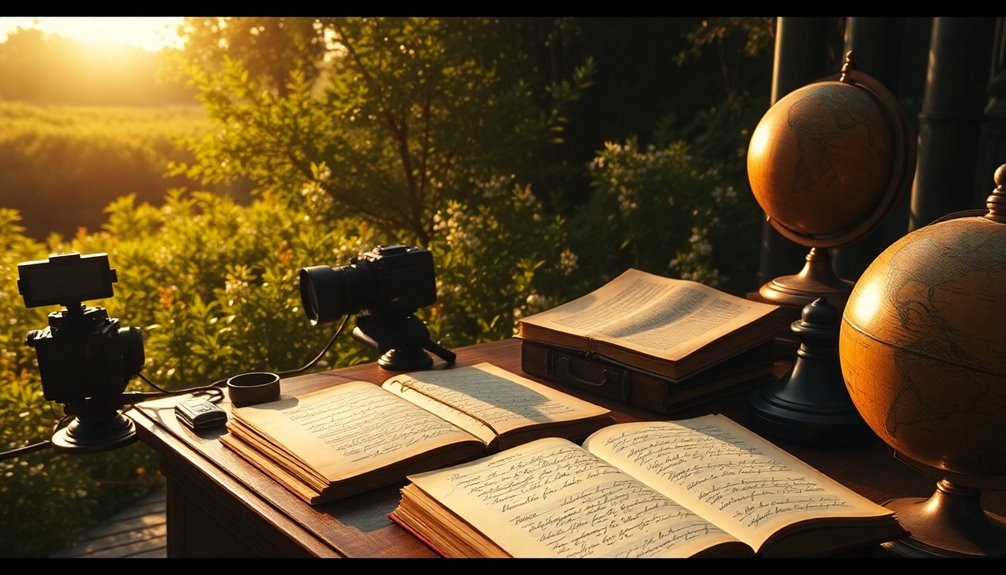
Although Elizabeth Gilbert first gained widespread recognition for her memoir "Eat Pray Love," her writing journey encompasses a diverse range of genres and themes.
After the success of her memoir, which was adapted into a film starring Julia Roberts, she ventured into fiction with "The Signature of All Things." This novel, her sixth book, explores the life of Alma Whitaker, a 19th-century botanist, and examines women's intellectual ambitions. Gilbert's work resonates with the themes of resilience and strength, showcasing how women navigate their journeys in the face of challenges. Her portrayal of Alma reflects the essence of embracing personal growth as a means to overcome societal limitations.
Gilbert's rich narratives and vivid settings capture readers, showcasing her ability to engage with complex characters. As the history of book-to-movie adaptations continues to unfold, her works remain prominent, blending personal journeys with broader themes that resonate across different mediums. Her storytelling often reflects the importance of meaningful connections, which echoes the themes found in adaptations like "The Little Prince."
Gilbert's writing invites exploration and reflection, making her a significant literary figure.
The Adaptation Team
The Adaptation Team
As the adaptation of "The Signature of All Things" takes shape, Emily Ballou's role as the screenwriter stands out. Her experience with successful adaptations, like "The Slap," guarantees a thoughtful translation of Elizabeth Gilbert's novel into a compelling format.
The production team at WGBH Boston, known for high-quality period dramas, collaborates closely with Ballou to maintain the essence of the original story.
- They focus on rich narrative and complex themes.
- Key themes include women's roles in the 19th century.
- Alma Whitaker's journey as a pioneering botanist is central.
- Emotional and intellectual growth is emphasized.
- Adaptations often require balancing fidelity to the source material with viewer engagement.
- The historical context of the time, including immigrant experiences, provides a backdrop that enriches the characters' development and motivations. Additionally, the adaptation may draw on the importance of marginalized individuals' contributions to enhance character depth and highlight overlooked stories.
Together, they aim for a successful adaptation that resonates with audiences. Additionally, the exploration of systemic oppression in historical contexts can provide depth to the characters' struggles and motivations.
PBS Masterpiece's Legacy
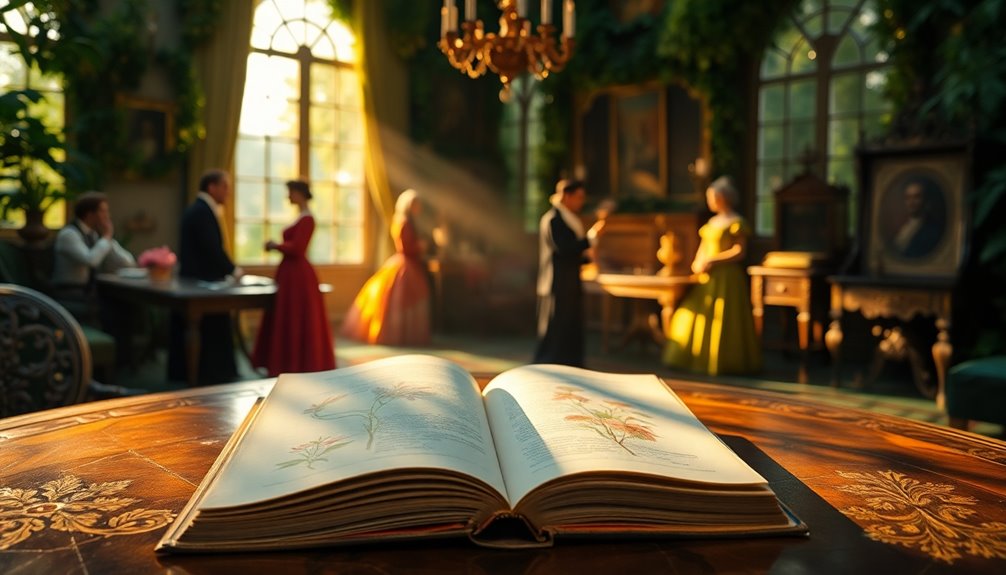
PBS Masterpiece stands as a beacon of high-quality storytelling, having shaped the landscape of period dramas and literary adaptations since 1971.
You can see its legacy in successful adaptations like "Downton Abbey" and "Wolf Hall," both of which have captivated audiences and earned acclaim as top prime-time series on PBS.
Masterpiece's meticulous attention to detail and character development guarantees that beloved literary narratives translate effectively into film. This commitment not only keeps classic literature alive but also makes it relevant for contemporary viewers. Additionally, its adaptations often reflect themes of resilience that resonate deeply with audiences, much like the stories portrayed in "The Book Thief." Furthermore, the intricate plots and dynamic character development in these adaptations enhance viewer engagement and emotional investment.
Produced by WGBH Boston, PBS Masterpiece aims to faithfully capture the essence of original works, creating a lasting impact on how stories are told on screen, further solidifying its place in the domain of quality television. Furthermore, its influence can be seen in the way it handles historical accuracy, ensuring that adaptations resonate with both authenticity and emotional depth.
Popularity of Book Adaptations
You might be surprised to learn that over 50% of Hollywood films each year are adaptations of books, a trend that highlights their financial appeal.
These adaptations not only rake in more money but also spark greater interest in the original literary works, enticing readers to engage with the source material.
As you explore the popularity of these adaptations, consider how they shape both the film industry and audience connections to literature.
Financial Success of Adaptations
The financial success of film adaptations is hard to ignore, with over 50% of Hollywood movies based on literary works each year. Films adapted from books earn, on average, 53% more than original screenplays, making them a lucrative choice for studios.
Between 2007 and 2016, book adaptations generated about $22.5 billion, showcasing their significant contribution to the film industry's financial success.
- Successful adaptations often boost original text sales.
- They help revive books, catapulting them back onto bestseller lists.
- A third of Western film releases stem from literature.
- Adaptations attract established audiences familiar with the source material.
- They capitalize on existing fan bases, ensuring a wider reach.
This trend highlights the undeniable value of literary adaptations in cinema.
Audience Engagement and Interest
How do audiences connect so deeply with film adaptations of books? It's simple: you enjoy familiar narratives that spark your imagination.
Adapting a book allows filmmakers to tap into the rich worlds readers already love, enhancing audience engagement. With over 50% of Hollywood films based on literary works, it's clear that successful adaptations resonate with viewers.
They not only boost source material ratings—just look at how the *Harry Potter* films revived the novels—but also generate impressive box office returns. In fact, adaptations earn 53% more than original screenplays, proving you prefer stories you recognize.
With streaming platforms investing heavily in these adaptations, you gain access to a broader range of enchanting tales, ensuring your literary favorites come to life on screen.
Challenges in Adapting Literature

While adapting literature into film can create a rich visual experience, it often presents formidable challenges, particularly when dealing with complex narratives like *The Signature of All Things*.
You'll find that condensing Alma Whitaker's extensive life story into a standard runtime risks losing story integrity and character depth.
Key challenges include:
- Capturing the essence of Alma's internal dialogue
- Selecting which scenes and characters to include
- Translating introspective reflections into visual storytelling
- Managing high fan expectations from loyal readers
- Steering budget constraints that impact production quality
These hurdles require innovative solutions to preserve the novel's themes, especially Alma's struggle against 19th-century limitations, while ensuring the film resonates with both new audiences and devoted fans.
Successful Adaptation Examples
When you look at iconic adaptations like *Harry Potter* and *The Lord of the Rings*, it's clear that collaboration with authors can enhance storytelling.
These films not only engage audiences but also transform the source material into something fresh and exciting.
Iconic Adaptation Case Studies
Successful adaptations can breathe new life into beloved stories, enchanting both fans of the original material and new audiences alike.
Iconic cases like these showcase how a successful adaptation can honor its source material while delivering an engaging cinematic experience:
- The Lord of the Rings trilogy: Blended fidelity with innovative storytelling.
- Harry Potter series: Deeply engaged readers and expanded its global fandom.
- Jurassic Park: Transformed the narrative with groundbreaking effects and high production values.
- The Godfather: Masterfully translated Mario Puzo's novel into a cinematic classic.
- Gone Girl: Gillian Flynn's involvement kept the film's psychological depth intact.
These examples demonstrate that a successful adaptation can resonate across generations and mediums, offering fresh perspectives on cherished tales.
Author Collaboration Benefits
Adapting beloved stories for film often thrives on collaboration between authors and filmmakers. Successful adaptations often benefit from this author collaboration, ensuring that the essence of the original material remains intact.
For instance, J.K. Rowling's involvement in the Harry Potter series allowed filmmakers to stay true to the characters and themes fans cherished. Similarly, Gillian Flynn's engagement in adapting *Gone Girl* led to an authentic portrayal of its complex narrative.
The *Lord of the Rings* trilogy exemplifies how close collaboration can resonate with both devoted readers and newcomers alike. By leveraging the unique insights authors provide, filmmakers can craft richer narratives that captivate audiences, making the shift from page to screen both seamless and successful.
Audience Engagement Strategies
While many adaptations endeavor to stay true to the original story, engaging the audience emotionally is key to their success. Successful adaptations like *Harry Potter* and *The Lord of the Rings* show that when you connect viewers with characters and themes, you're boosting audience engagement and satisfaction.
Here are some strategies that have worked well:
- High production values and iconic performances, as in The Godfather
- Innovative storytelling, like recontextualizing classics in 10 Things I Hate About You
- Serialized content on platforms such as The Witcher
- Increased book sales, evidenced by Fifty Shades of Grey
- Staying faithful while exploring deeper themes in the finished product
These strategies can create a more compelling connection between popular books and their adaptations.
Cultural Impact of Adaptations
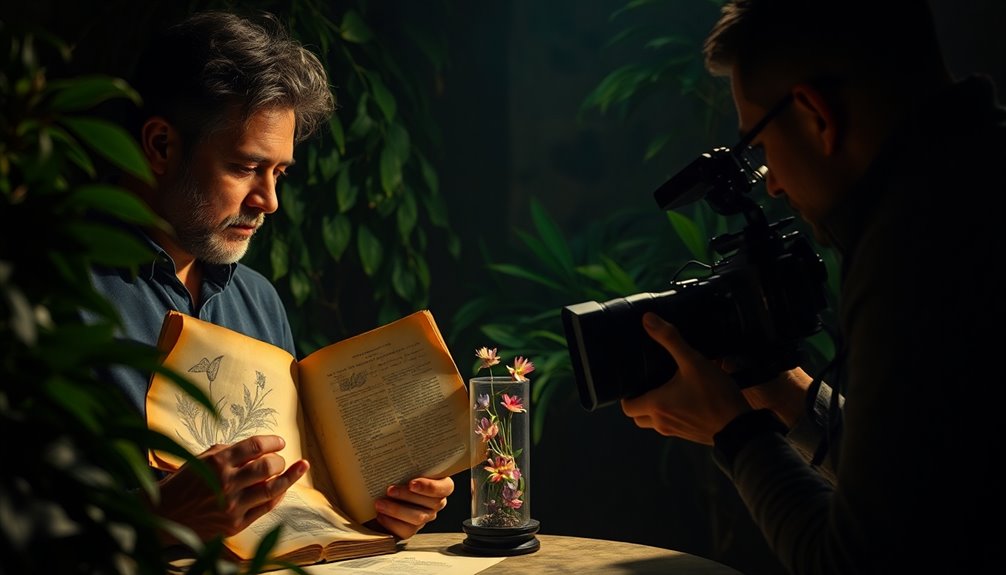
Adaptations, such as *The Signature of All Things*, often spark renewed interest in their original literary sources, leading to a noticeable uptick in book sales and reader engagement.
Successful adaptations boost the visibility and ratings of these works on platforms like Goodreads, enhancing their cultural relevance.
With over 50% of Hollywood films being adaptations, it's clear that audiences crave these familiar narratives.
High-profile adaptations, particularly those from PBS Masterpiece, shape public discourse around the themes of the original stories, reinforcing their importance.
This reciprocal relationship between literature and cinema shows how successful screen interpretations can ignite a resurgence in the popularity of the books they're based on, proving that adaptations are essential to our cultural landscape.
Future of Film Adaptations
As streaming platforms continue to dominate the entertainment landscape, the future of film adaptations looks promising and diverse. You can expect a surge in unique stories and formats, as the demand for adaptations grows.
With interactive storytelling gaining traction, viewers may soon influence the narrative, creating a more engaging experience.
- Greater representation of lesser-known works
- Serialized content for deeper character exploration
- Increased author involvement for authentic adaptations
- Integration of VR and AR for immersive experiences
- Innovative technologies enhancing storytelling possibilities
As these trends unfold, adaptations won't only reflect their source material but also redefine how stories are told, making the future of film adaptations an exciting frontier.
Importance of Collaborative Efforts
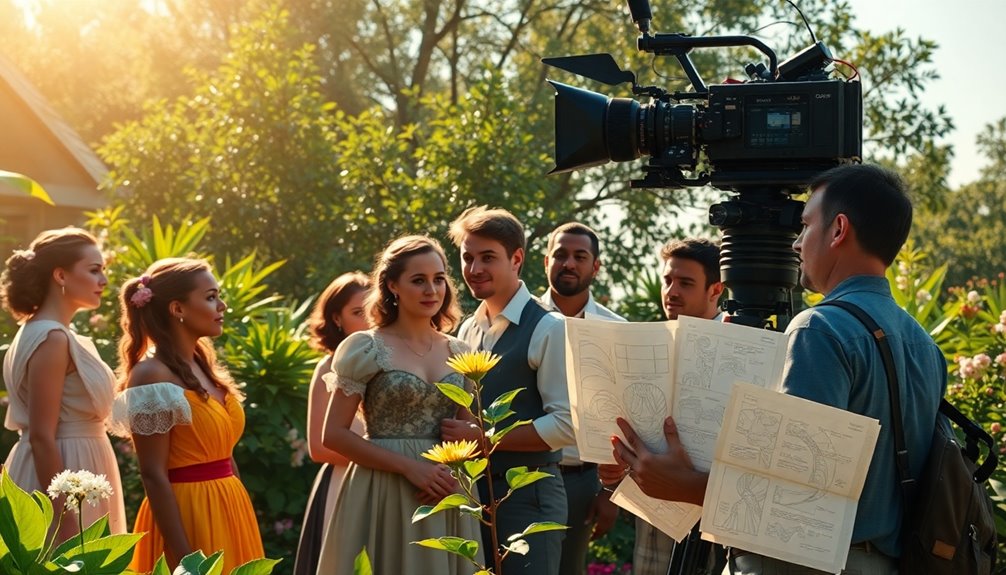
The future of film adaptations thrives on collaboration, where the screenwriter, director, and author work together to bring a story to life. This teamwork enhances the adaptation process, preserving the essence of the original narrative while tailoring it for a visual medium.
Emily Ballou's experience as the screenwriter for 'The Signature of All Things' exemplifies how a skilled writer can translate complex themes into compelling storytelling. Effective communication within the adaptation team fosters creative solutions, just like in successful adaptations such as 'The Lord of the Rings.'
Engaging with the original material and involving authors like Elizabeth Gilbert creates deeper audience connections and guarantees character depth. Ultimately, diverse perspectives enrich the final product, making the adaptation a true collaborative effort.
Engaging Modern Audiences
To engage modern audiences, you need enchanting storytelling techniques that resonate with today's themes, like feminism and ambition.
By incorporating diverse representation, you not only reflect a broader range of experiences but also draw in a wider audience enthusiastic for meaningful narratives.
This approach can transform "The Signature of All Things" into a film that feels both fresh and relevant.
Captivating Storytelling Techniques
While adapting 'The Signature of All Things' for film, enchanting storytelling techniques are essential to engage modern audiences.
You'll need to focus on engaging storytelling techniques that reflect Alma Whitaker's journey in a male-dominated world.
Consider these elements:
- Utilize innovative cinematography to bring botanical wonders to life.
- Explore episodic formats that probe deeper into character development.
- Guarantee strong performances that translate Alma's emotional landscape.
- Incorporate visual effects that highlight diverse settings like Philadelphia and Tahiti.
- Foster collaboration among the adaptation team to maintain the novel's essence.
Diverse Audience Representation
Capturing the complexities of Alma Whitaker's journey means engaging a diverse audience that craves authentic representation. By reflecting the intricacies of 19th-century women's lives, the adaptation can resonate with contemporary issues like gender equality and intellectual ambition.
You'll find that modern themes of empowerment and diversity draw in viewers seeking stories that mirror their own experiences. Highlighting intersectionality and the struggles of marginalized groups fosters richer narratives, enhancing audience engagement.
Juxtaposing historical context with today's sensibilities not only makes the story relevant but also encourages a deeper understanding of societal issues, past and present. In this way, "The Signature of All Things" can captivate diverse audiences and spark meaningful discussions, ultimately leading to increased viewership.
Conclusion
In adapting "The Signature of All Things" for film, you're not just witnessing a story shift; you're experiencing a fresh interpretation of its rich themes. With a talented team at the helm and PBS Masterpiece's esteemed legacy, this adaptation promises to resonate with both fans of the novel and new audiences alike. Isn't it exciting to think about how this collaboration can breathe new life into beloved stories? Get ready to plunge into an enthralling cinematic journey!
